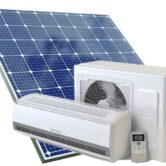As solar energy continues to redefine global power systems, understanding the different types of solar panels and how they work is key to making informed decisions for homes, businesses, or utility-scale installations.
What Is a Solar Panel System?

A solar panel system (or PV system) consists of interconnected photovoltaic (PV) cells grouped into modules (panels), usually 60, 72, or 96 cells per module. These systems capture sunlight as photons and convert it into electricity using a semiconductor material—typically doped crystalline silicon.
To make the energy usable, the system includes an inverter that converts DC (direct current) from the panels into AC (alternating current) used by appliances. Some advanced systems come with micro-inverters integrated within each module for greater control and simplified wiring.
What Are Solar Cells Made Of?
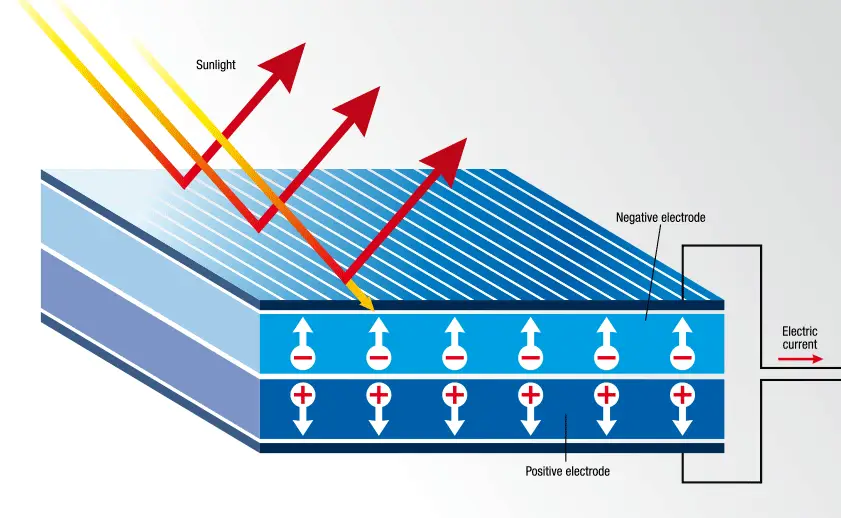
Most commercial solar cells are made of crystalline silicon doped with:
- Phosphorus (N-type) to create free electrons
- Boron (P-type) to create “holes” for current flow
This forms a P-N junction, the critical region where electric current is generated as light excites electrons. Other important layers include:
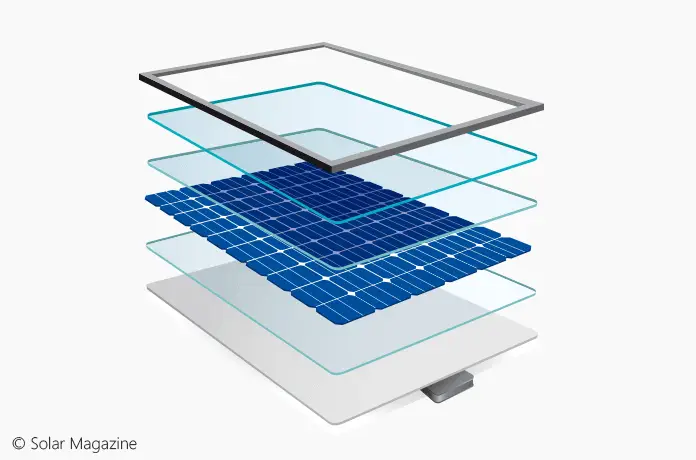
- Anti-reflective coating (to capture more light)
- Metallic grid (to direct electrons)
- Glass encapsulation (to protect against weather)
💡 Efficiency Tip: Energy conversion depends on how much of the light spectrum is absorbed. Materials with an optimal bandgap (1–1.6 eV) offer the best efficiency.
Types of Solar Panels
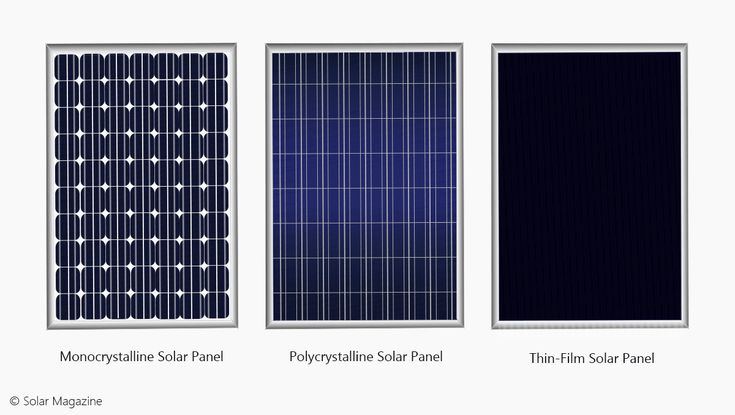
1. Monocrystalline Panels (Mono-Si)
Constructed from a single silicon crystal that’s been sliced into wafers, monocrystalline solar panels contain rows and columns of these wafers. Since the silicone crystal (also called an ingot) is cylindrical, slicing them into wafers causes them to have rounded edges.
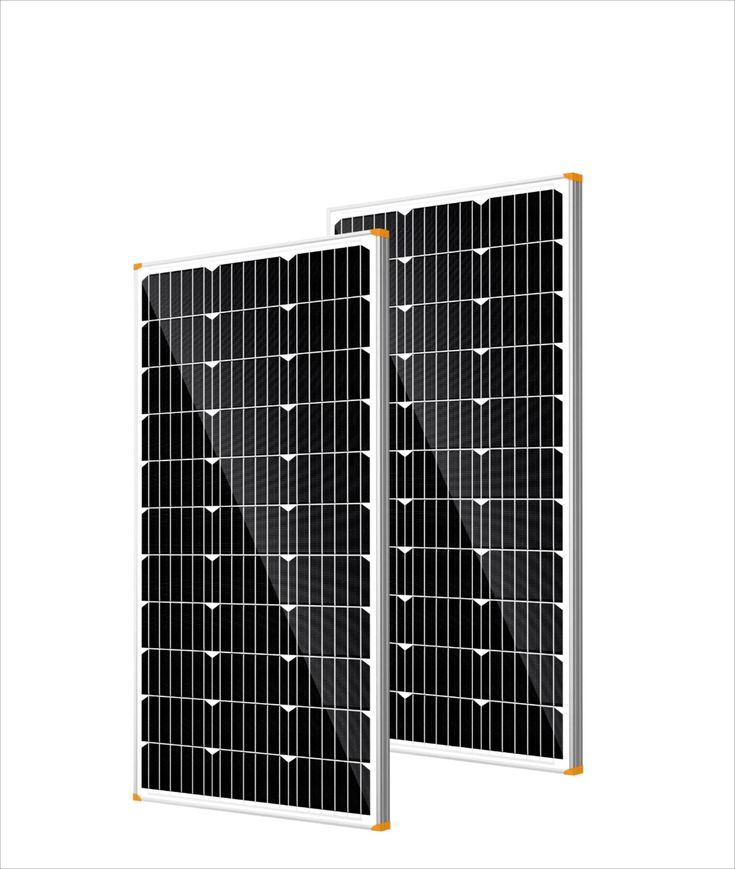
- Material: Pure, single-crystal silicon
- Efficiency: 18%–22%
- Color: Dark black or dark blue
- Cost: High (but dropping with scale)
- Best for: Homes with limited space, high-efficiency goals
🟢 Pros:
- Highest power output per square meter
- Performs well in low light and heat
🔴 Cons:
- Higher manufacturing cost
- More silicon waste during production
📊 One 400W monocrystalline panel with 5 sunlight hours = 2 kWh/day
2. Polycrystalline Panels (Poly-Si)
Polycrystalline (also referred to as multi-crystalline) solar panels have solar cells containing multiple crystalline fragments of silicon. The fragments may be the left-over pieces from monocrystalline solar production. They are arranged in an irregular manner. Then they’re melted together and formed into solid blocks before being cut into wafers. Each wafer is more rectangular than its monocrystalline counterparts.
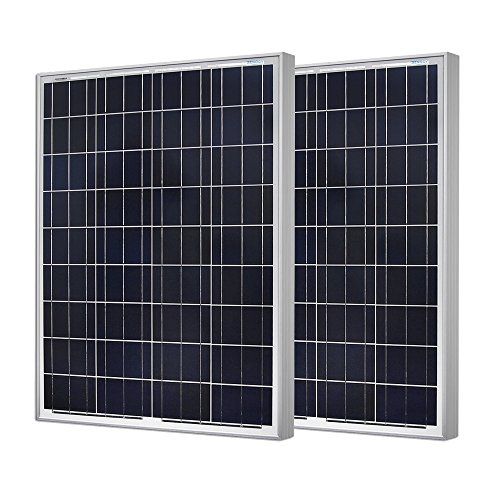
- Material: Melted silicon fragments
- Efficiency: 15%–17%
- Color: Blue with square edges
- Cost: Moderate
- Best for: Larger roofs, budget-conscious installations
🟢 Pros:
- Lower production cost
- Less energy-intensive to produce
🔴 Cons:
- Lower efficiency, requires more space
- Slightly shorter lifespan than mono-Si
📊 One 300W polycrystalline panel with 5 sunlight hours = 1.5 kWh/day
3. Thin-Film Solar Panels
Called second-generation solar cells, thin-film solar panels can be made of a variety of materials including:
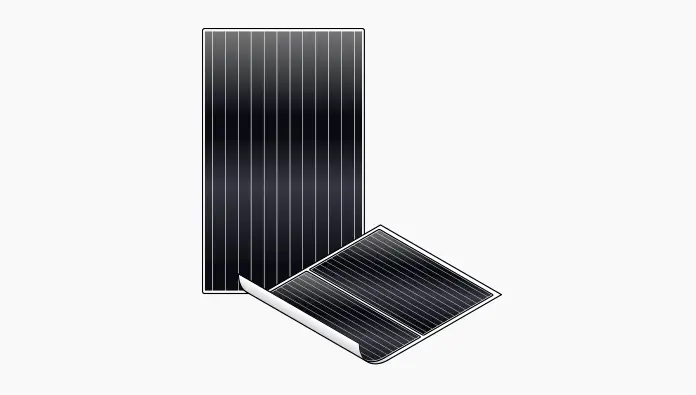
- Material: CdTe, CIGS, a-Si (non-crystalline)
- Efficiency: 10%–13% (some up to 15%)
- Color: Uniform black or blue
- Cost: Low
- Best for: Portable setups, curved surfaces, large-scale utility use
🟢 Pros:
- Lightweight, flexible
- Better heat tolerance than crystalline
🔴 Cons:
- Shorter lifespan (10–20 years)
- Needs much more space for the same output
📊 One 200W thin-film panel with 5 sunlight hours = 1 kWh/day
4 Emerging Solar Technologies to Watch
1. Bifacial Panels
- Generate electricity from both sides
- Capture reflected light from the ground
- Ideal for rooftops with light-colored surfaces or open land
2. Concentrated Photovoltaics (CPV)
- Uses lenses/mirrors to concentrate sunlight onto multi-junction cells
- Very high efficiency (up to 40% in labs)
- Requires solar tracking and cooling—used in high-sun areas
3. Solar Tiles (Shingles)
- Roof-integrated monocrystalline or thin-film
- Sleek design with lower visual impact
- Slightly less efficient but highly aesthetic
4. Transparent Solar Panels
- Absorb non-visible light (UV & IR) while letting visible light through
- Suitable for windows, screens, buildings
- Potential game-changer for urban energy generation
📈 Example: If transparent panels cover a skyscraper’s windows with just 5% efficiency, they can offset up to 25% of the building’s energy needs.
Side-by-Side Comparison
| Panel Type | Efficiency | Lifespan | Cost Range | Appearance | Ideal Use |
|---|---|---|---|---|---|
| Monocrystalline | 18–22% | 25–30 years | $$$ | Black, rounded edges | Space-limited rooftops |
| Polycrystalline | 15–17% | 20–25 years | $$ | Blue, square cells | Farms, large home rooftops |
| Thin-Film | 10–13% | 10–20 years | $ | Matte black, flexible | Utility-scale, curved surfaces |
| Bifacial (Emerging) | 19–25% | 25–30 years | $$$ | Dual-sided | Ground-mount or light roofs |
| CPV (Emerging) | 30–40% | 20–30 years | $$$$ | Lens-based | High solar intensity zones |
| Solar Tiles | ~16% | 25–30 years | $$$$ | Roof-shingle integrated | Aesthetic residential systems |
| Transparent (R&D) | 5–11% | 15–25 years | $$ | Fully see-through | Windows, mobile devices |
Cost & Performance Snapshot
- Price per watt (2024 average): $2.50–$4.00
- Energy cost from solar: $0.06–$0.08/kWh
- Payback period: 5–8 years (avg. U.S. home)
- Efficiency record: 41% in lab conditions (CPV tech)
How Many Panels Do You Need?
Use this formula:
Required Panels = Daily kWh Use ÷ (Panel Wattage × Sunlight Hours)
Example:
- Daily use = 20 kWh
- Panel = 400W
- Sun = 5 hours/day
⇒20 ÷ (0.4 × 5) = 10 panels
Final Takeaways
- Choose monocrystalline for the best all-around efficiency and lifespan.
- Opt for polycrystalline when budget matters and space is not a concern.
- Use thin-film for commercial or mobile needs where flexibility is key.
- Watch the space: bifacial, CPV, tiles, and transparent panels are the future of smart, aesthetic solar energy.





